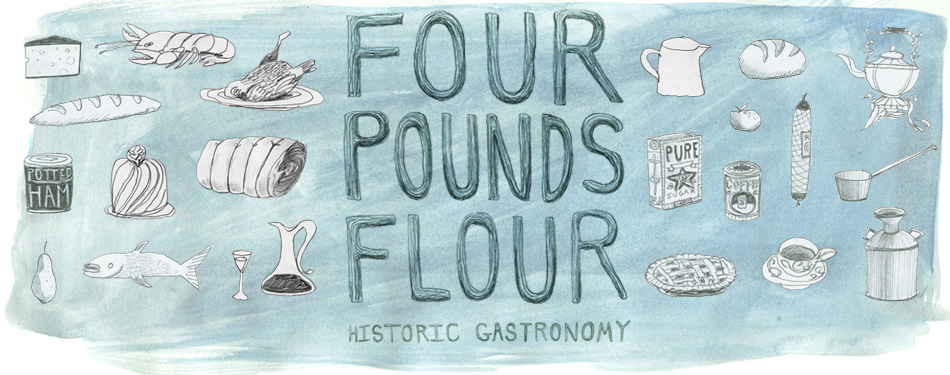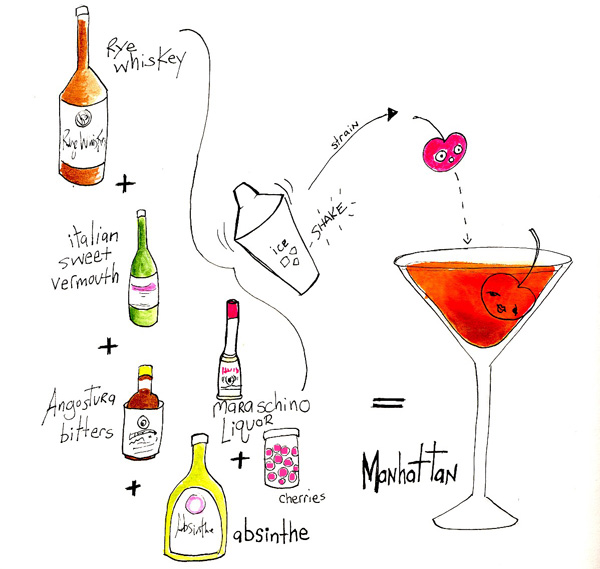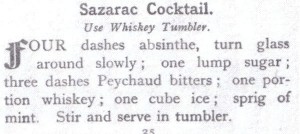Clipped from the Cleveland Plain Dealer, sometime in the 1940s. Recovered from a box of ephemera dating from 1939-1952.
Monthly Archives: May 2010
Snapshot: This Cheese is 115 Years Old
 The cheese on the left belongs to my friend Clare Burson. Here’s what she has to say about it:
The cheese on the left belongs to my friend Clare Burson. Here’s what she has to say about it:
“In 1895, my great great grandmother gave this wedge of cheese to my 14 year old great grandfather when he left his shtetl (little village) in lithuania for south africa so as to avoid conscription in the tsar’s army. for some reason, my great grandfather, charles, never ate the cheese. nor did he throw it away. he took it with him to johannesburg, where he lived with his uncles for a time before striking out on his own, fighting in the boer wars, and, with the defeat of the dutch, moving yet another world away – to memphis, tn, where he married and had four daughters.
Strangely still in possession of the cheese when he died, my great grandfather passed it down to my grandmother.
My parents discovered the cheese in the early 1970′s when my mom took on the project of refurbishing the trunk my great grandfather had shlepped from lithuania to south africa to memphis. when she opened it for the first time, she found a desiccated wedge of something resembling a pumice stone, dusty, and wrapped in a disintegrating cheese cloth.
I guess my mom gave it back to my grandmother for safe keeping. my grandmother still has it, wrapped in aluminum foil in a paper envelope labeled: papa’s cheese.”
Fascinated with the idea of an heirloom food, I spread the story of Clare’s cheese. My friend Rachel came back with this little bit of her family’s history:
“My great-grandfather brought pepper seeds with him from Italy, and we still grow the same peppers, saving seeds every year. My mom sent them away to see what variety of pepper plants they are and there weren’t any they identified them with, so they’re been classified as ‘Adolfo’ peppers, named after my great-grandfather.”
Does anyone else have a story of a heritage food in their family?
By the way, the historic cheese slice was the inspiration for Clare Burson’s upcoming album Silver & Ash. Clare and I are teaming up to present a four-course dinner concert that weaves together time, place, and the complexities of family history. You should come! For more information and tickets go here.
Events: New York Cookies
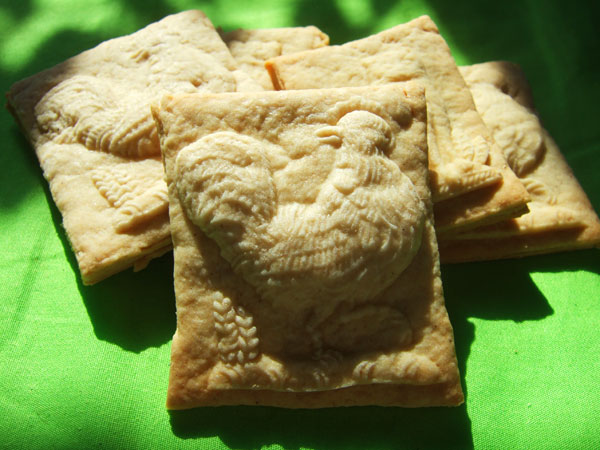
Traditional New York Cookies, stamped with historic Rooster and Kitty stamps.
I spent last Sunday morning at Old Stone House, stamping out cookies with the local kids of Park Slope. The stamps are historic replicas from House on the Hill and are just. beautiful. I was shocked at the level of detail the molds yielded; although I used them with 19th century cookie recipes, I think they would work well with most modern sugar cookie dough.
Stamped cookies are a tradition early Dutch settlers brought to New York (nee New Amsterdam). Over the years, they became known as a New York tradition that transcended immigrant groups. In the city, stamped cakes were passed out as treats on New Year’s Day, and as a memorial token at funerals.
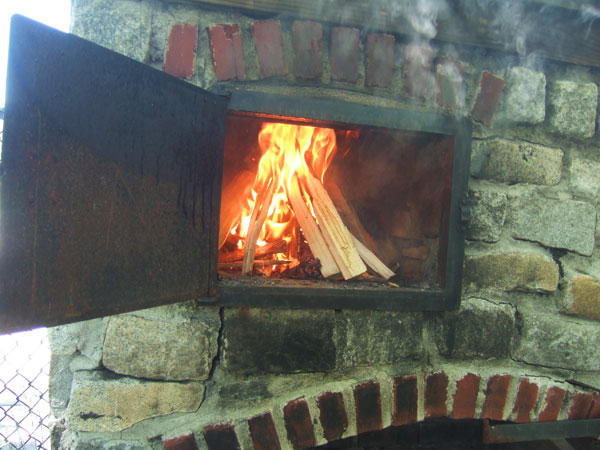
Heating up the hearth at Old Stone House. I lit a large fire and let it burn down to red and white hot coals. Then, I pushed the coals to the back of the oven, and placed the cookies in the front. To test the oven, I made Tollhouse break and bake cookies, and they baked exactly as long as they said they would on the package. Voila!
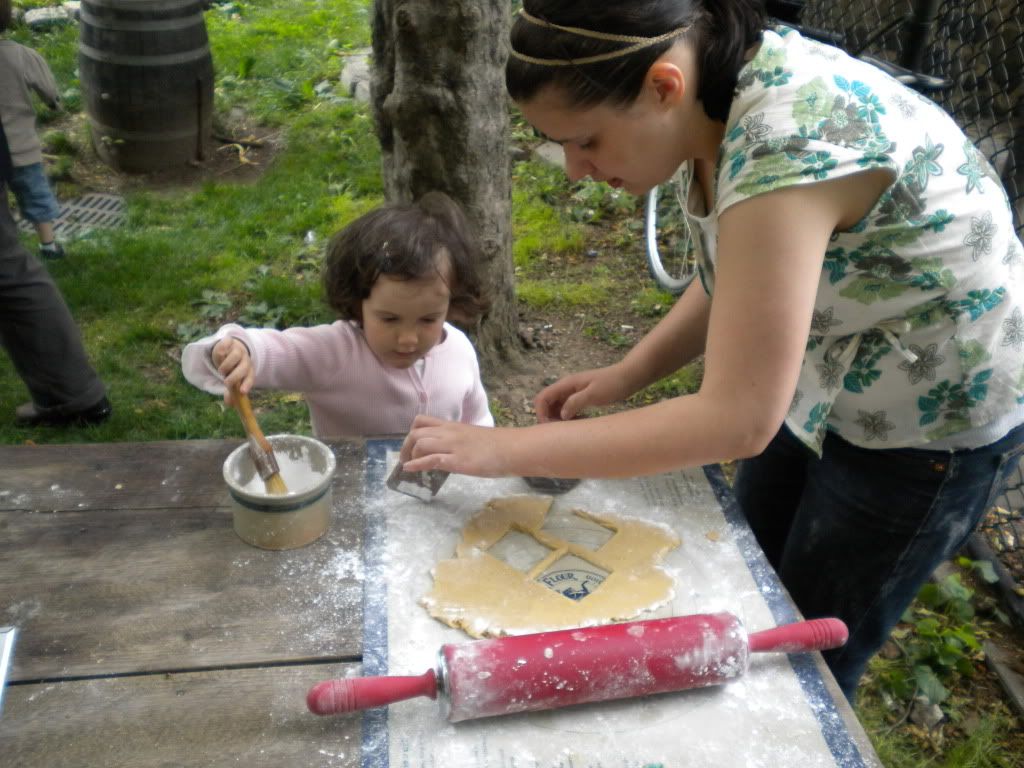 A teeny helper dusts confectionar’s sugar in the mold. The sugar stops the dough from sticking, and delivers a more detailed image. Photo by Sharon Stadul
A teeny helper dusts confectionar’s sugar in the mold. The sugar stops the dough from sticking, and delivers a more detailed image. Photo by Sharon Stadul
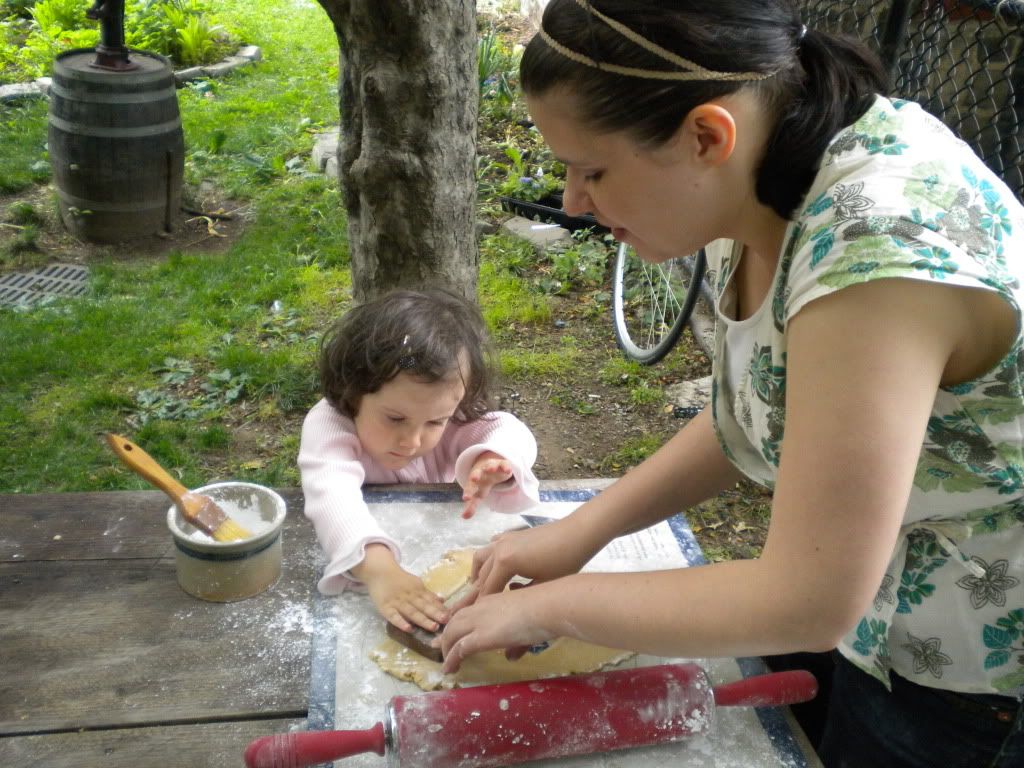 And then we stamp. Photo by Sharon Stadul.
And then we stamp. Photo by Sharon Stadul.
We made two cookie recipes on Sunday: one, a caraway and orange cookie, came from the book Food, Drink and Celebrations of the Hudson Valley Dutch by Peter G. Rose. Man they were good – I want to experiment more with that recipe. The second cookie was a nutmeg-cinnamon-rosewater cake called, appropriately, New York Cookies. The recipes is from 1840 and I give it a B+. You may like them, particularly with a cup of tea, but they taste too much like the 19th century for my liking.
***
New York Cookies
From Directions For Cookery, In Its Various Branches by Eliza Leslie, 1840.
1/2 pound sugar
2 ounces rosewater
3 pounds flour
1 nutmeg
1 tsp cinnamon
1 teaspoon baking soda
1 pound butter
***
Snapshot: Effect of Alcoholic Drinks and Narcotics on the Human System
I snapped this at The Ear Inn during last weekend’s pub crawl.
The Gallery: The Idea Was to Live in the Past.
 Brooklyn Sanitary Fair 1864: The New England Kitchen.
Brooklyn Sanitary Fair 1864: The New England Kitchen.
My mom was in town over the weekend, and being the history nerd duo that we are, we decided to go see “Healing the Wounds of War: The Brooklyn Sanitary Fair of 1864” at the Brooklyn Museum of Art. I know a “Sanitary Fair” doesn’t sound like much fun, but apparently it was in the 19th Century. From the BMA website:
“During the Civil War, sanitary fairs were held to raise money for the war effort in major cities in the Northeast. These large-scale fairs were social events that combined entertainment, education, and philanthropy…The money was used for clothing, food, medical supplies, and other provisions for the Union Army.”
There were arts and crafts for sale, “curiosities” on display, and opportunities to flirt. But my favorite? “The New England Kitchen.”
“The idea is to present a faithful picture of New England farm house life of the last century. The grand, old fire place shall glow again; the spinning wheel shall whirl as of old; the walls shall be garnished with the products of the forest; and the dinner table, always set, shall be loaded with substantial New England cheer. We shall try to reproduce the manners, customs, dress, and if possible, the idiom of the time…The period fixed upon is just prior to the throwing overboard of the tea in Boston Harbor.
The idea was to live in the Past, and the Present was ignominiously banished.” From History of the Brooklyn and Long Island Fair
The Kitchen was a Civil War reenactment of Revolutionary War era foodways. It was 1864 reenacting 1776.
Awesome. I love this. Love. It.
I really want to reenact the 186o’s reenacting 1770’s. I just have to figure out how.
Events: The 19th C. Pub Crawl is Tomorrow!
We only have room for 50 participants, so please RSVP on Facebook (or leave a comment on this post) to reserve a spot!
Cocktail Hour: The Whiskey Sour
 Illustration by Angela Oster.
Illustration by Angela Oster.
Whiskey is my drink of choice, so I admit I love the unintentional whiskey theme of this week.
The Whiskey Sour was invented sometime in the middle of the 19th century; Jerry Thomas describes a brandy and a gin variation in his 1862 book. Other variations: a dash of egg white makes it into the Boston Sour, and Boston also gave birth to the Ward 8 in 1898, which adds orange juice and grenadine.
***
The Whiskey Sour
From The Cocktail Book: A Sideboard Manual for Gentlemen, 1926
2 teaspoons simple syrup (or super fine sugar)
2-3 dashes lemon juice
1 tablespoon seltzer
2 ounces whiskey
1. In a rocks glass, add simple syrup, lemon juice and seltzer. Stir to combine (or until sugar is dissolved).
2. Fill glass with ice, and add whiskey. Stir until the outside of the glass is cold. Garnish with a cherry and orange wedge, or seasonal fruits.
***
And if you like a Whiskey Sour, try the Ward III at the 19th C. Pub Crawl’s last stop, Ward III: “Made with bourbon, strawberries, egg whites and nutmeg, it’s actually ‘a derivation of the classic Sour,’ explains (owner) Neff. A historical classic, viewed through rose-colored glasses—and given a healthy dose of red berries, too.” (Metromix New York)
For a full list of Ward III’s “exquisite libations”, go here.
Cocktail Hour: The Manhattan
Illustration by Angela Oster.
David Wondrich, cocktail historian and Jerry Thomas expert, says the Manhattan “…Probably dates to the Manhattan Club, which was a social club for rich Democrats at Fifth Avenue and 15th Street in the 1870s.” Accustomed to the maraschino cherry standards of a modern-day Manhattan, I was pleasantly surprised when I was recently served a variation from Wondrich’s book Imbibe! Remarkably smooth and even a touch sweet, this has been my favorite drink I’ve quaffed in a long time.
***
The Manhattan
From Imbibe! By David Wondrich, 2007.
Based on a recipe by Jerry Thomas.
2 ounces rye whiskey
1 ounce Italian sweet vermouth
1 dash Angostura bitters
1 dash Absinthe
1 barspoon (or one teaspoon) Maraschino liquor
1. Fill a tumbler with ice; add all ingredients and stir until the outside of the glass is cold.
2. Strain into a martini (cocktail) glass, and garnish with a cherry or a twist of lemon peel.
***
Ready for another variation of this classic drink? Try Madame X‘s Dirty Cherry Manhattan. The second stop on the 19th C. Pub Crawl, Madam X serves up a Manhattan made with Basil Hayden’s 8-year-old bourbon, sour cherry syrup and sweet vermouth. For a full list of Madame X’s cocktails, go here.
Cocktail Hour: The Sazerac
 Illustration by Angela Oster.
Illustration by Angela Oster.
When Absinthe became legal in the states, the first drink cocktail enthusiasts began mixing up was the Sazerac. Invented in New Orleans circa 1870, it’s based on an even older Cognas drink invented by Antoine Amédée Peychaud; his bitters are indispensable in creating this cocktail.
***
The Sazerac
From The Cocktail Book 1926 Reprint: A Sideboard Manual For Gentlemen, 1926
four dashes absinthe
2 ounces rye whiskey
3 dashed Peychaud bitters
1 teaspoon simple syrup
Mint
1. Pour absinthe into a rocks glass, and swirl it around until the bottom and the sides of the glass are coated. Pour out absinthe.
2. Add ice, then whiskey, bitters, and simple syrup. Still until the outside of the glass is cold. Garnish with a sprig of mint and enjoy.
***
For an updated version of this recipe, order the 17th Street Sazerac at Rye House, the first stop on the 19th Century Pub Crawl on Saturday. Metromix New York, who inspired this post, had this to say about the modernized cocktail: “Made from Rittenhouse Rye, Hine Cognac, demerara syrup, Peychaud and Angostura bitters and Marteau Absinthe, the drink has all the anise zip of the original, but a deeper tone as well. Not a traditional 1835 pour by any means.”
Sounds ok to me, but I may be more tempted by the Rye House Punch, a combination of chai infused Rittenhouse rye, Batavia Arrack, lemon, grapefruit, Angostura bitters, and soda. Not only do I love a good chai tea, but I am fascinated with Batavia Arrack, a popular 19th century spirit only recently re-introduced to the market. I’m going to pick up a bottle to experiment with some 19th-century recipes, but I can’t wait to try it in a Victorian-inspired cocktail on Saturday.
For a full list of Ryehouse’s cocktails, go here.
Cocktail Hour: Cocktail Week!

Image from How To Mix Drinks by Jerry Thomas
When the weather gets all warm and luscious like this, all I want to do is drink. I want to sit under a tree and sip a frosty cocktail. So, to lead up to Saturday’s 19th C. Pub Crawl, I’m declaring it Cocktail Week. Everyday, I’ll be posting the recipe for an iconic 19th-century cocktail and featuring a pub crawl bar that serves up their own version of a classic concoction.
Let’s get ready to imbibe.
